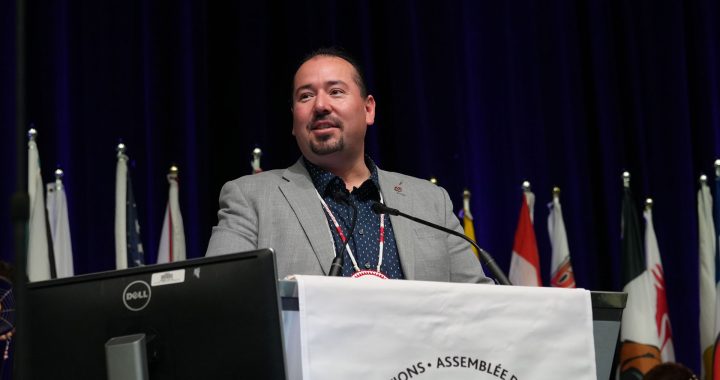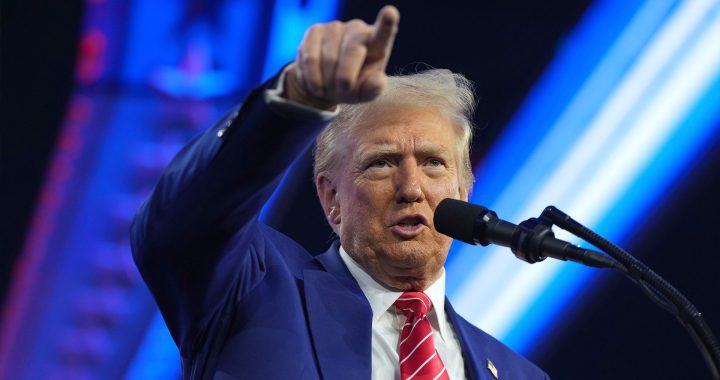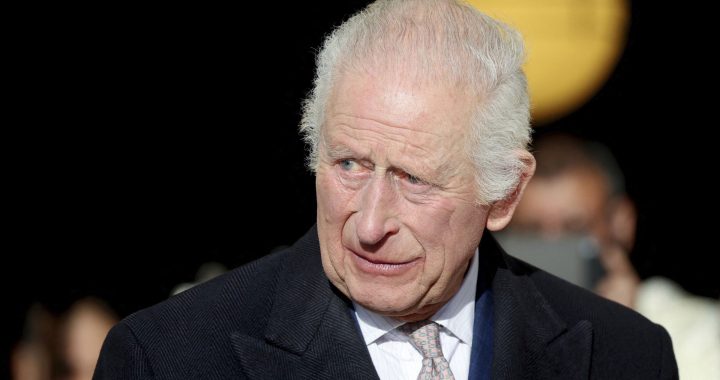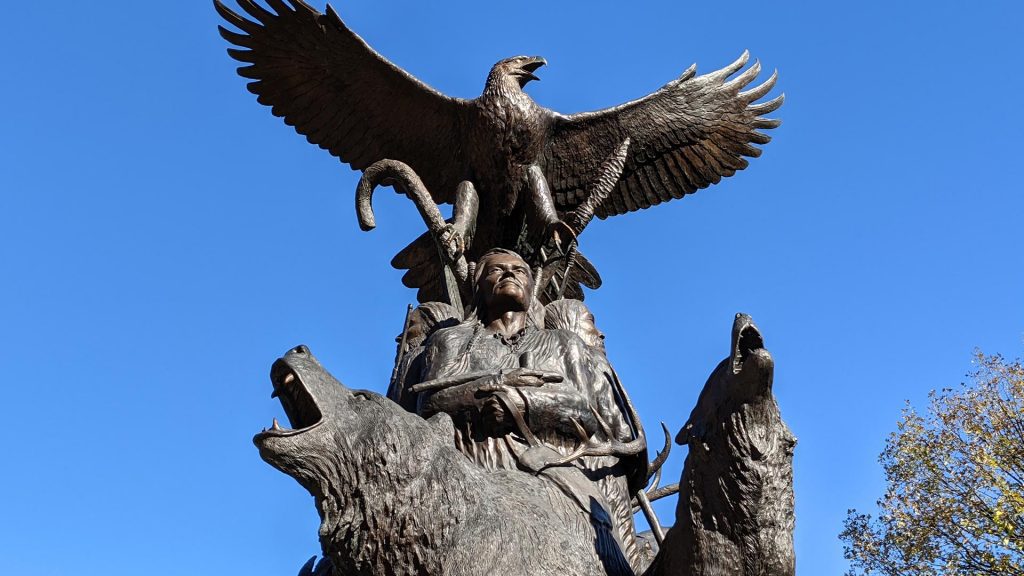
The National Aboriginal Veterans War Monument in Ottawa. Photo: Mark Blackburn/APTN.
For the past 23 years the National Aboriginal Veterans Monument has stood resolutely in an Ottawa park just blocks from Parliament Hill.
It’s where veterans and others gather for National Aboriginal Veterans Day each Nov. 8., in recognition of Indigenous contributions to military service, particularly in the First and Second World Wars and Korean War.
Sculptor Lloyd Pinay, who created the majestic and powerful piece, talked about how it came to be in a recent interview with APTN News. Pinay, from Peepeekisis First Nation in southeastern Saskatchewan, now lives near Borden, west of Saskatoon.
“Originally, I was asked by one of the veterans organizations and an Indigenous organization [the National Aboriginal Veterans Association and Congress of Aboriginal Peoples] to submit some ideas for a national monument they were trying for in Ottawa,” Pinay recalled.
“My connection there was my father was a commando in World War Two,” he said. “[He]was one of the ones dropped behind the lines with the 1st [Canadian] Paratrooper Battalion and they were the ones sent in to try to cripple the big guns that were [aiming at] Juno Beach.”
Pinay recalls his father telling him previous efforts had failed but this time they succeeded – at a terrible cost.
Pinay’s work had become well-known in North America over the previous decades. He sculpted the four buffalo and two human figures that stand at Wanuskewin Heritage Park in Saskatoon before being tapped with the monument’s creation. Pinay asked his father how he came to be part of the Battalion.
“I said, ‘How did you become selected for this?’ and he said, ‘Well, very young and foolish. They put us in a dark room and asked us what we see. I could see, in the dim light in this room, figures of this and that and I gave them the truth. And they selected me to be part of the program because of my vision.’”
D-Day landings by paratroopers

According to Veterans Affairs Canada, while it was still dark in the early hours of June 6, 1945, “Allied paratroopers, including 450 Canadians, jumped from aircraft or landed in gliders behind the German coastal defenses.
“Separated by gusty winds, outnumbered, and only lightly armed, they nevertheless captured a German headquarters, destroyed a key bridge, and seized an important crossroads, all the while sowing confusion and disorder within enemy ranks.”
Pinay said the casualties suffered that day were “out of this world.”
His father was also injured. Pinay said it was that moment in his father’s history that helped inspire the final design for the monument.
“They never got full recognition for what they did, so that was kind of a driving factor to come up with a concept with the different regions of Canada that had contributed, and weren’t recognized for it,” he said. “There was a lot of bitterness when the war was over, they’d been in France, they were free but when they came back to Canada, they were no longer free.”
“They were told ‘go back to your reserve, that’s where you belong,’ yet they’d just sacrificed their lives, and weren’t treated as equals. In fact, when they got back, they still couldn’t vote, they couldn’t get off the reserve, not without permission.”
As for the design of the monument itself, Pinay said he sought the insight of the spirit guides who were said to be with quite a few of the Indigenous soldiers in times of trial.
“So, I came up, conceptually, with a work that was balanced. There’s four different regions within Canada and four different groups and four different spirit guides. And the overriding principle was the representative of the Great Spirit, the eagle. It sits on a staff that is curved, representing times of peace, and a war staff.”
The piece also includes representations of different animals important to Indigenous cultures.
“I used, of course, the buffalo, we’re from the Plains. I used an elk, because of its keen sight and ability to move quite fast and its courage. And of course, the bear. The advice I received from Elders was that the bear was not a symbol of ferocity – it was actually a symbol of healing,” Pinay said.
“Their belief was the bear had the ability to heal itself so I had to include that. Fleetness of foot was something I considered with the wolf, but the overriding thing that wolves are really about is that they’re family oriented. That’s their strong feature.”
Sadly, Pinay’s father died before the monument was unveiled in its final home in Ottawa.
“He’d seen it in concept and at the time he died in early 2000, it was just when the big work was starting. But, he had seen the smaller one,” Pinay said.
“He never was that open about it, until it came to that monument going up and he said, ‘Wow, you’re really doing something,’ and that coming from a straight-laced soldier when art was considered frivolous. It was more a realization that this was something good and it should be done.”
Pinay rejects first site chosen by government
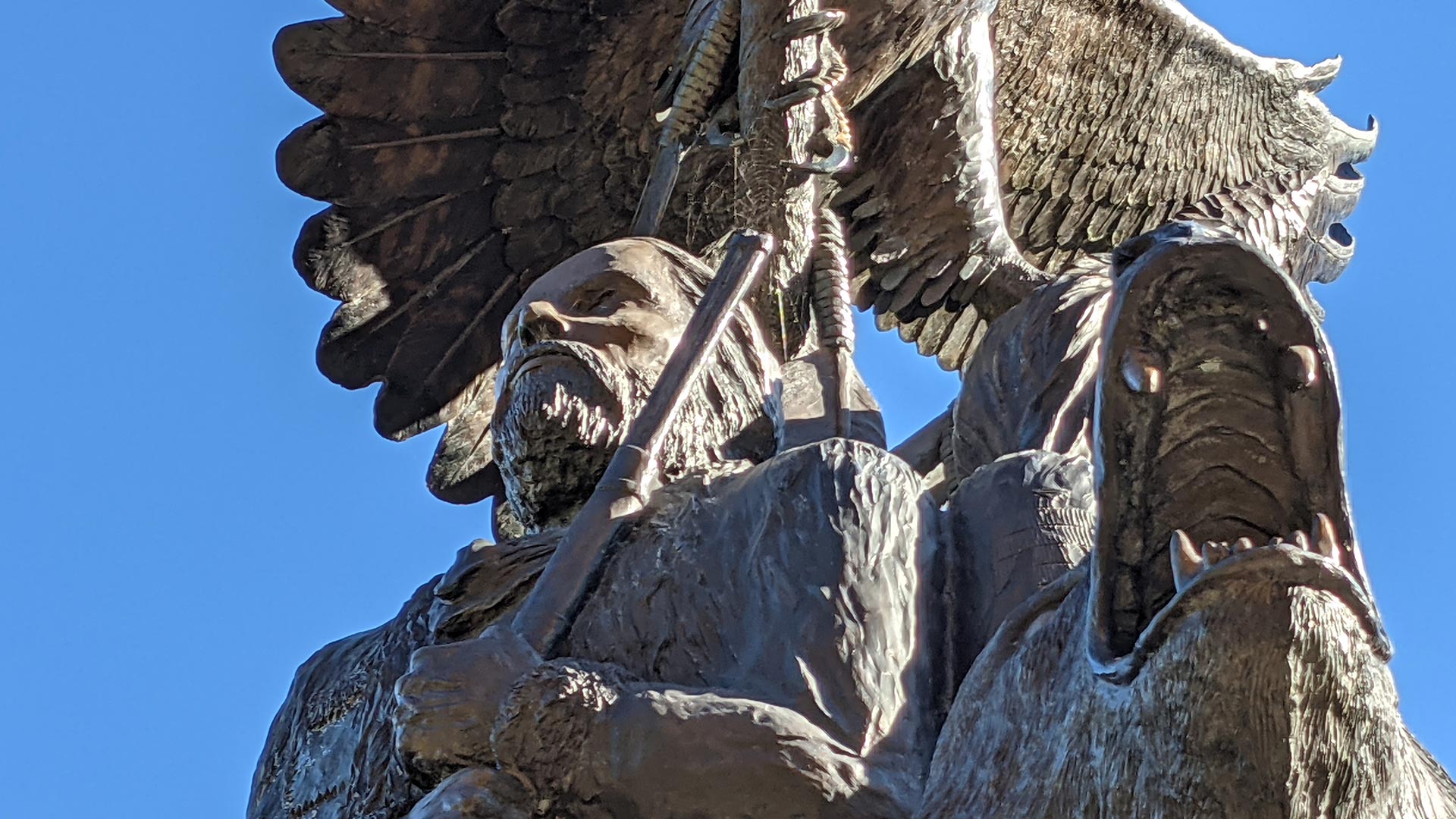
Where it sits now in Confederation Park was Pinay’s choice for the monument, he said.
“I had a lot to say on the location with the [National] Capital Commission in Ottawa. I was offered a very prominent spot, in a highly visible triangle close to the Parliament buildings, and I said, ‘Yeah it would look great there. What’s underneath it?’ It was a parking garage. So I said, ‘Nah, I don’t think so, there’s no connection to the earth there.’ They wanted something that was highly visible and I wanted something that was accessible for when the Indigenous groups might have their Remembrance Day. It worked out,” said Pinay.
“It’s a reminder but it’s not necessarily ‘it’s done, it’s over’. It’s an ongoing thing. I was mad that all the veterans I knew were promised stuff for going to war. You know, freedom and land – the same as everybody else got. Every veteran received a quarter section or whatever they got. But, they [Indigenous veterans] weren’t given anything.”
“That’s the ongoing thing I don’t think was ever dealt with,” Pinay said.
According to Veterans Affairs, by the end of the conflict in 1945 more than 3,000 First Nations members, as well as an unknown number of Métis, Inuit and other Indigenous recruits, had served the country.
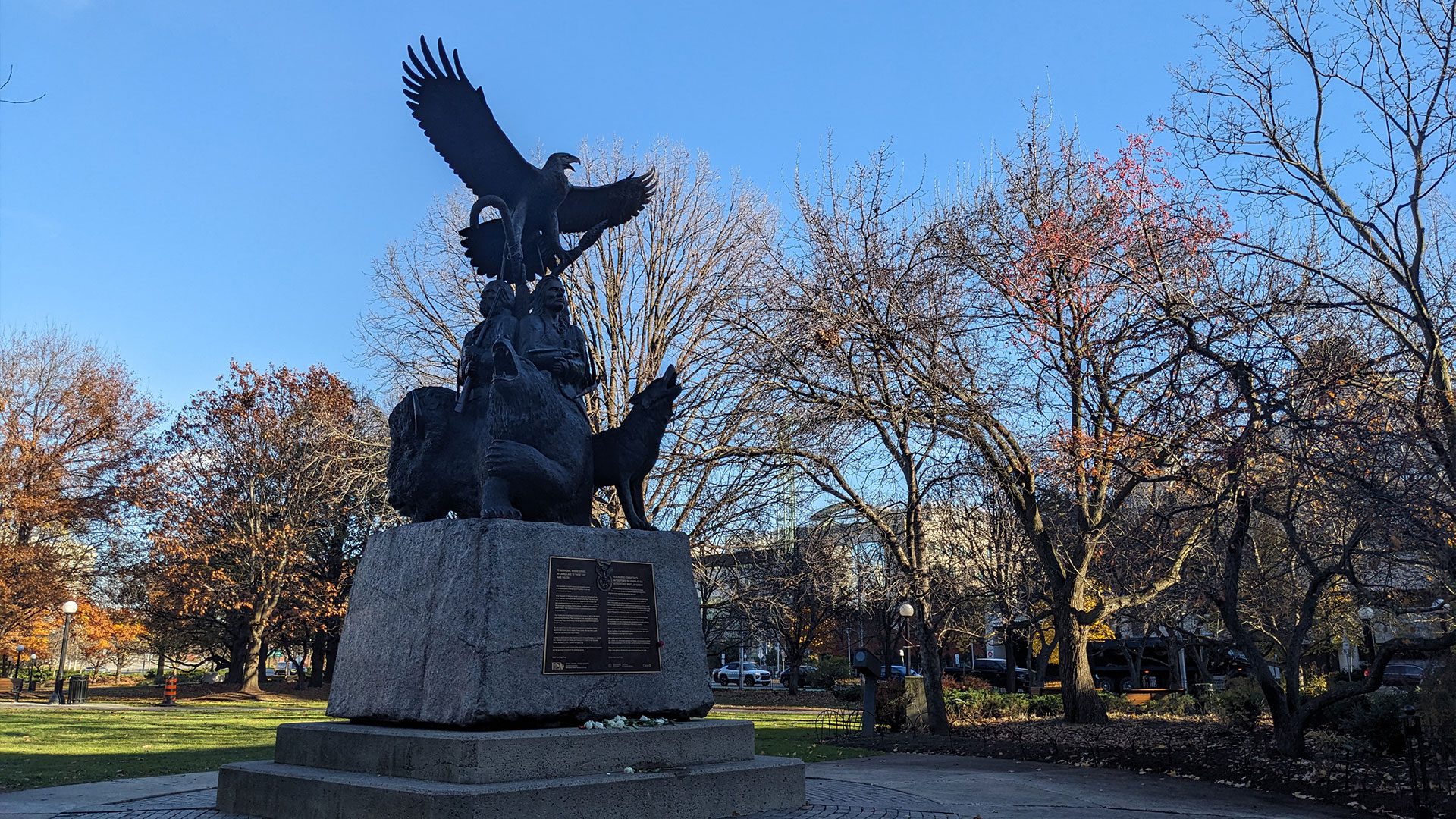
The plaque on the statue reads in part:
“This monument is raised in sacred and everlasting honour of the contributions of all Aboriginal Canadians in war and peacekeeping operations. Many thousands of Aboriginal people saw action and endured hardship in the First and Second World Wars and the Korean War.
“They served with honour and distinction in all branches of the service and in every rank and appointment from Private to Brigadier. They fought overseas to defend the sovereignty and liberty of allied nations, in addition to supporting the cause at home. Their dedication continues in peacekeeping operations in faraway lands.”




